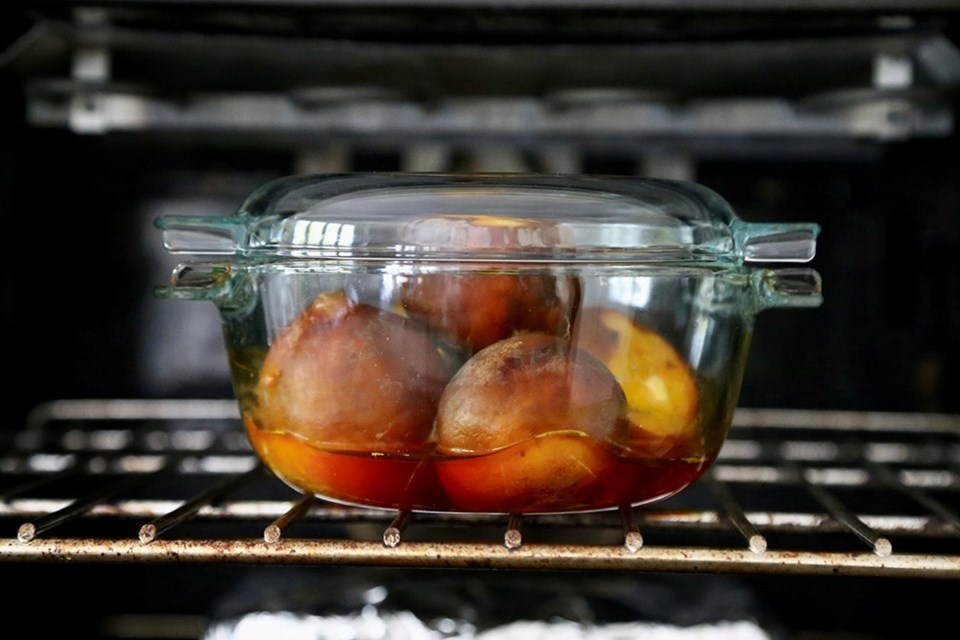Growing, preparing and preserving organic sweet and savoury beets is one of my favourite garden-to-table traditions. Now is the time (finally) to get started, from seed or from seedlings. Garden centres are chockablock full.
Beets are a polarizing vegetable — you either love them or you don’t. My family loves the sweet yet savoury, umami earthiness of beets that comes from geosmin, an organic compound produced by soil microbes. The healthier the soil, the happier the microbes.
Gorgeous red, golden, candy stripe, even white beets are super easy to grow just about anywhere, and they don’t attract pests and disease as easily as brassicas, even carrots. Beets help loosen and aerate soil, and improve fertility.
Beets are resilient, winter-hardy, relatively slow growing, and can be consumed at all stages of growth, including as microgreens. If one invests in growing and maintaining good soil biology, beets can be a mega storehouse of fibre, antioxidants, and beneficial macro and micro nutrients.
Also though, beets can take up soil-borne heavy metals, pesticides and toxic chemicals into root and leaf tissue, and those poisons can be transferred to humans. It is important then to know where your produce comes from and how it is grown. Better yet, grow your own in a pot, planter, bucket or bed.
I’m planting several varieties now in a single 4x8-foot no-dig bed, but also intercropping here and there around the perennial, flower and vegetable gardens, in warm sun and in cooler part-shade. Beet greens are gorgeous and look as lovely in flower beds and arrangements as they do on the plate.
To take best advantage of limited garden space, grow beets down into your soil, right next to something that grows up like lettuce or spinach (not chard), or bush beans (not pole beans).Growing beets between trellised cucumbers or corn is another space saver that works well for me.
Grow beets in healthy, living, well-drained soil, adding plenty of organic matter if soil is dense with clay or compaction. Be sure to surface-mulch with clean chopped straw or an inoculated mulching compost. Always, I add my all-time favourite worm castings and also sea minerals. This year, I will foliar spray with a compost tea.
I plan to bulk harvest beets from the dedicated bed for canning, pickling and drying, and we will harvest the rest incrementally throughout the season, as beets mature.
My plan is to sow one quarter-bed of Bull’s Blood and Winterkeeper beets late summer, for fall harvest, and then store the beetroots in damp sawdust over the winter. I will clean and dry, chop, vac-pack and freeze the greens.
Contrary to conventional wisdom, I don’t blanch hardy broadleaf greens like kale and beet before freezing because the high heat involved in braising and boiling will eventually kill most worrisome pathogens. During harvest season, I choose the path of least resistance, and time.
We use beets fresh in juices, smoothies and salads (peeled and washed); roasted in mashes, pasta, spreads, dips and soups, even ice cream. A favourite main of late is golden beet and roasted shallot risotto, tinted and garnished with the concentrated pan juices from oven-roast beets, and topped with a single crab cake or piece of grilled fish.
I don’t have the time or inclination to waste tin foil by individually wrapping beets to roast in the oven, so I wash and roast them all together, skin-on, in a bit of water in a thrift store pyrex dish. The warm (not hot) beets are a breeze to peel and slice, and that beautiful beet juice is liquid gold — perfect for drizzling and tinting. By adding the juice at the last moment to al dente arborio rice, the grains stay pearly white against an exotic saffron coloured background.
Cooked beets freeze well, as does beet hummus, beet soup, beet juice, and beet puree — which by the way pairs beautifully with Prosecco. Beet bellini anyone? Puree roast red or golden beets with a bit of maple syrup and ginger, freeze in ice cubes trays, then store cubes in a glass mason jar. Place thawed puree in a tulip or coupe glass, top-up with Prosecco, Champagne or soda, garnish with mint and voila!
Laura Marie Neubert is a West Vancouver-based urban permaculture designer. Follow her on Instagram @upfrontandbeautiful, learn more about permaculture by visiting her Upfront & Beautiful website or email your questions to her here.
For a taste of permaculture, click on the YouTube link below:
(Video - Courtesy of West Vancouver Memorial Library)



